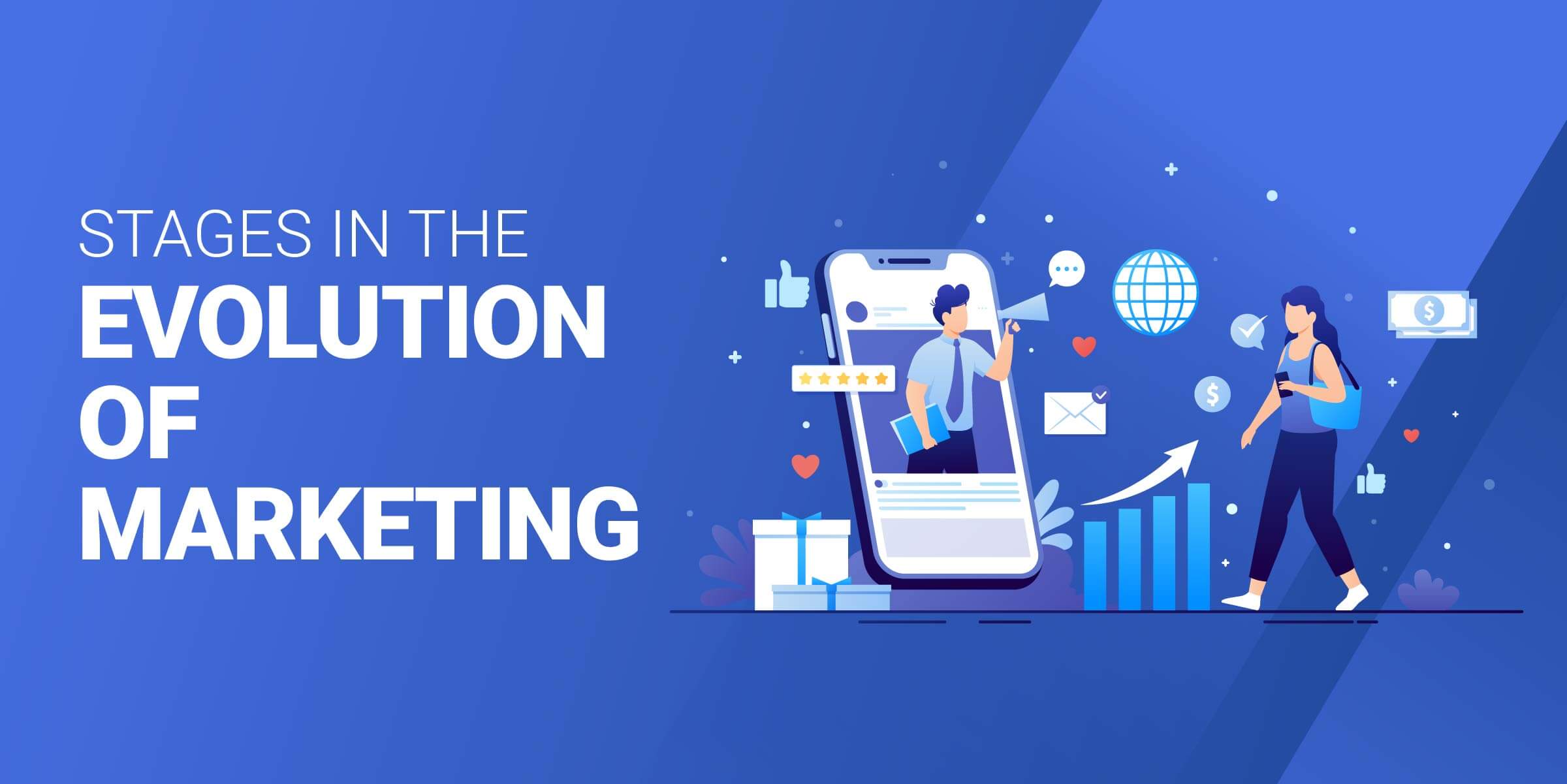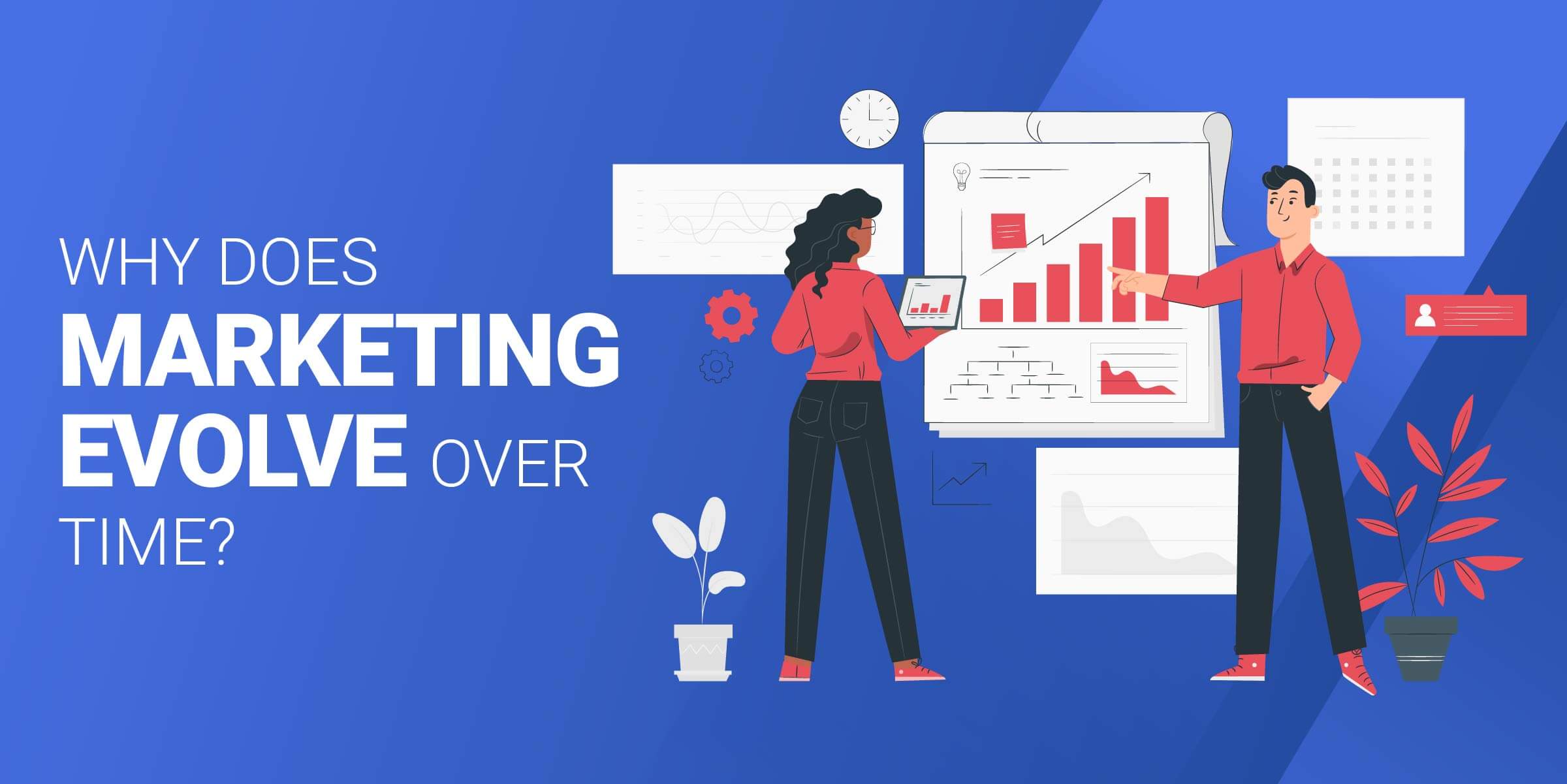Marketing: It's a word we hear and see everywhere today. From flashy billboards to catchy jingles, it seems like there's no escaping its grasp. But have you ever wondered how marketing came to be?
Well, marketing certainly isn’t a new concept. Get ready for a journey through time as we delve into the fascinating history of marketing. From ancient civilizations to the digital age, this is a story that will make you appreciate the art and science behind those clever advertisements.
Table of Contents
The Interesting History of Marketing


It's incredible how much marketing has changed over time. We tend to think of it as a modern concept, but in reality, it has been around for centuries. Even in its earliest forms, marketing aimed to capture the attention and desires of consumers, just like it does today.
When Did Marketing First Start?


As we mentioned earlier, marketing isn’t a new concept. In fact, marketing has a long and storied history.
1500 BCE: Beginning of Logos
To understand the origins of marketing, we have to go way back. Picture this: it's 1500 BCE, and ancient civilizations like Mesopotamia are already using symbols and logos to identify their products. During this time, mass production of items was starting, and artisans would stamp their products with a symbol to indicate the piece was one of theirs. These early visual representations helped establish brand identities and build trust with consumers.
1450 CE: The First Printing Press
Fast forward to 1450 CE, and the world is changed forever with the invention of the printing press. This revolutionary device paved the way for mass production of advertising materials. Suddenly, businesses could distribute printed ads and reach larger audiences than ever before.
The 1730s through the early 1900s: Outdoor Ads and Magazines
The 1730s through the early 1900s marked the era of outdoor ads and magazines. Billboards started popping up along busy streets, captivating passersby with eye-catching visuals.
Meanwhile, magazines became popular mediums for advertisements, allowing businesses to target specific audiences and showcase their products in glossy spreads.
After the 1920s: Radio and TV Marketing
Then came the 1920s, a decade of transformative change. Radio emerged as a powerful marketing tool, allowing businesses to broadcast their messages to millions of listeners. The 1920s also witnessed the rise of the first television sets, laying the foundation for television marketing that would dominate the following decades.
After the 1970s: Computers Hit the Marketing Game
The marketing landscape took another leap forward after the 1970s when computers entered the scene. With the advent of personal computers, businesses gained new ways to analyze consumer data and tailor their marketing strategies accordingly. It was the start of a digital revolution that would shape the future of marketing.
Stages in the Evolution of Marketing


Throughout history, marketing has undergone various stages of development. Let's explore these key stages:
Production Orientation
In the early days, businesses focused primarily on producing goods efficiently and at a low cost. The idea was that if they made products affordable and widely available, customers would come.
Sales Orientation
As competition increased, businesses realized they needed to actively sell their products. This stage emphasized persuasive selling techniques and aggressive promotional strategies.
Marketing Orientation
By the mid-20th century, businesses began to shift their focus from product-centered approaches to customer-centered ones. They started conducting market research, identifying consumer needs, and tailoring their offerings accordingly.
Relationship Orientation
In recent years, marketing has evolved further, emphasizing the importance of building long-term relationships with customers. Businesses now understand that customer loyalty and satisfaction are essential for success. The adoption of the internet now allows businesses to connect with their customers in a variety of forms and really cultivate that relationship.
The History of Marketing Mediums


Now let's explore the mediums that have played a crucial role in the history of marketing.
Adoption of Personal Computers
The 1990s witnessed the rise of digital marketing, forever changing the way businesses connect with consumers. With the widespread adoption of personal computers and the internet, marketers discovered new avenues for reaching their target audiences. Websites, email campaigns, and banner ads became prominent tools for engaging potential customers.
The Rise of Smartphones
But it wasn't until the 2000s and the rise of smartphones that digital marketing truly exploded. Suddenly, people had constant access to the internet in the palms of their hands, creating unprecedented opportunities for businesses to reach them anytime, anywhere. Mobile apps, social media platforms, and location-based marketing became game-changers in the industry.
The Social Media Boom
Speaking of social media, it deserves a special mention. The early 2000s saw the emergence of platforms like MySpace and Friendster, but Facebook truly revolutionized how businesses connect with their target markets. Today, social media marketing has become a vital component of any successful marketing strategy, allowing brands to engage directly with consumers and build online communities.
Why Does Marketing Evolve Over Time?


Like all things, marketing changes. There are a multitude of reasons that marketing evolves, but technology and consumer needs are two of the main influences.
Technology
Marketing is a dynamic field that constantly adapts to changing circumstances. Two significant factors drive its evolution: technology and consumer needs and expectations.
Technology plays a pivotal role in shaping marketing strategies. As new technologies emerge, businesses find innovative ways to leverage them for reaching and engaging customers. From radio and television to computers and smartphones, each advancement has opened up new possibilities for marketers to connect with their target audiences.
Consumer Needs and Expectations
Consumer needs and expectations also drive marketing's evolution. As society changes, so do the desires and preferences of consumers. Successful marketers are the ones who stay attuned to these changes, anticipating and fulfilling customer needs before they even arise.
The Future of Marketing


So, what does the future hold for marketing? While we can't predict it with certainty, a few trends hint at what's to come.
In the short-term future, we can expect marketing to become increasingly personalized and data-driven. As technology advances, marketers will have access to more sophisticated tools for analyzing consumer behavior, allowing them to deliver highly targeted and relevant messages.
Moreover, the rise of artificial intelligence (AI) and machine learning will revolutionize marketing automation. AI-powered chatbots, voice assistants, and predictive analytics will enable businesses to provide seamless, personalized experiences at scale.
Looking farther ahead, the integration of marketing with virtual and augmented reality holds immense potential. Imagine trying on clothes virtually or experiencing products in immersive virtual environments before making a purchase. These technologies will redefine how businesses engage with consumers and make their products come to life.
Frequently Asked Questions
What is the evolution and history of marketing?
The evolution of marketing traces its roots back to ancient civilizations, with the use of symbols and logos to promote products. Over time, marketing has evolved through various stages, from production orientation to relationship orientation, while embracing new mediums such as radio, television, and digital platforms.
When did marketing strategy start?
Marketing strategy has been practiced for thousands of years. Its earliest forms can be traced back to ancient civilizations, where visual symbols and logos were used to promote products and establish brand identities.
What is the oldest way of marketing?
The use of symbols and logos can be considered the oldest way of marketing. Ancient civilizations employed visual representations to promote their products and establish brand recognition.
What were the major stages in the history of marketing?
The major stages in the history of marketing include production orientation, sales orientation, marketing orientation, and relationship orientation. These stages reflect the changing philosophies and approaches businesses have taken to reach and satisfy their customers.
Who created the 4 E's of marketing?
The 4 E's of marketing (Experience, Everyplace, Exchange, Evangelism) were popularized by marketing expert Bryan Eisenberg. They serve as a framework for understanding and implementing customer-centric marketing strategies.
What had the biggest impact on marketing?
The introduction of digital technology, particularly the internet and smartphones, has had the biggest impact on marketing. These advancements have revolutionized how businesses connect with consumers, providing new channels for engagement, personalized targeting, and data-driven strategies.





















